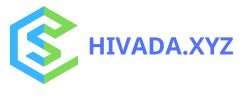When semantically connected data matters most



Image by Pete Linforth from Pixabay
Technological advances useful in fixing some points can often set off negative effects and completely different points inside the course of. Take into consideration the ability of pure language processing, generative AI and related varieties of AI in accelerating the info graph progress course of, as an example.
If you happen to occur to’re an equity analyst, experiencing that form of power can set off concepts like, “Hey. I can course of all the annual tales from this OEM (=distinctive gear producer, paying homage to a laptop or car maker) and as well as from their affiliate and supply networks, mine these relationships and predict the have an effect on of their second and third-order outcomes. Connecting that graph with a data graph would possibly help refine, geolocate and time these predictions.’
The reality is, senior choices architect Xan Huang posted in April on the Amazon Internet Firms Machine Learning weblog about exactly this type of issue, and gave the occasion of how “delays at a elements supplier would possibly disrupt manufacturing for downstream auto producers in a portfolio though none are straight referenced.”
I’m not denying the usefulness of such a solution. Nevertheless what bothers me is folks producing their very personal semantic metadata, resolving the entities and assembling their very personal graphs with datasets that must already have this type of metadata and self-describing auto-aggregation performance in-built.
What generative AI and Excel have in widespread: Waste
Let’s step once more and ponder the have an effect on of this aspect affect of individuals burning up this time and energy globally. What a duplication of effort and a waste of energy! Shouldn’t the tales themselves already embrace the required semantic metadata? Shouldn’t the industry-wide graphs be up and working and accessible as part of a public service?
Such an open public service should be creating and sustaining an {{industry}} graph for each {{industry}}, updating each graph repeatedly, providing most people with its private visibility into present and affiliate chains, on a timelier basis.
Appears folks on the Object Administration Group are engaged on a traditional to make this type of shared effectivity and effectiveness in financial reporting attainable.
The work in progress is called the Customary Enterprise Report Model (SBRM). The goal of SBRM is to logically contextualize enterprise paperwork (paying homage to public financial report data, which is non-perishable by definition) so that they’re interoperable. As soon as they’re logically fixed and dominated, the goal of SBRM is for spreadsheets to “talk about to at least one one other.”
SBRM on this methodology ensures to chop again what’s typically known as “spreadsheet hell,” by means of which all varieties of rework and duplication has grow to be the norm, simply because an environment friendly strategy of spreadsheet reusability hasn’t existed. SBRM has momentum because of the clear need for a shared historic file of agency and {{industry}} effectivity. Spreadsheets that formally doc agency financials ought to obviously be reusable and interoperable.
Rising in recognition: Linked data by the use of a unitary graph data model
A standards-based information graph shares data all through methods in a trusted methodology, by the use of a data model that’s logically fixed from greater ontology, to space ontology, to space object. That model may very well be a purposeful part of the info graph and is itself reusable as a result of its place in dynamically contextualizing data.
Proprietary graphs leverage the an identical basic guidelines as part of increasingly more automated, operational methods. Dave Duggal, founding father of interoperation and automation platform EnterpriseWeb, elements out that EWEB’s construction, as an example, has all graphs up and down. Nevertheless when processing, EWEB merely sees all of these as a single, unitary graph.
In essence, EWEB has a hypergraph construction that’s agent managed for enterprise-wide automation features. (See “Taming generative AI for enterprise-grade automation” at https://www.datasciencecentral.com/taming-generative-ai-for-enterprise-grade-automation for additional information.) Many telecom carriers use EWEB for software-defined group creation and configuration changes.
The worldwide graph know-how market sometimes is forecast to develop at a compound annual cost of virtually 22 p.c over a ten-year interval, rising from $3.25 billion in 2022 to $23.5 billion by 2032, according to Polaris Market Evaluation.
The information graph market by itself is a number of quarter of the dimensions of this graph know-how market. M&M estimated the 2023 world information graph market at $0.9 billion, forecasting market improvement to $2.4 billion by 2028, with the identical compound annual improvement cost of 21.9 p.c.
Networked data as a mirror of the pure world
Graph data methods will probably be designed to develop and scale organically, mirroring what the pure world does. On the coronary coronary heart of all enterprise representations are human connections and the best way folks in organizations are interacting with each other and with the bodily world.
There have been industrial and non-profit efforts to assemble single family bushes paying homage to Ancestry.com, FamilySearch and WikiTree for a number of years now, in low-cost makes an try to chop again duplication of effort.
A variety of years previously, Blue Thoughts Nexus, a shared, dynamic information graph helpful useful resource based in Switzerland for the Blue Thoughts Mission (focused on reverse engineering the thoughts), made world blended data sharing attainable between lecturers globally.
In addition to, the problem constructed a Github web site for purchasers not conscious of information graph know-how to assemble a small information graph and query its JSON-LD that semantically hyperlinks completely completely different contexts collectively:
These boundary-crossing collaboration efforts can in the reduction of the amount of rework. Quite a bit depends on continued efforts to encourage broader data sharing, in the reduction of siloing and focus additional on data that has persevering with historic value.





